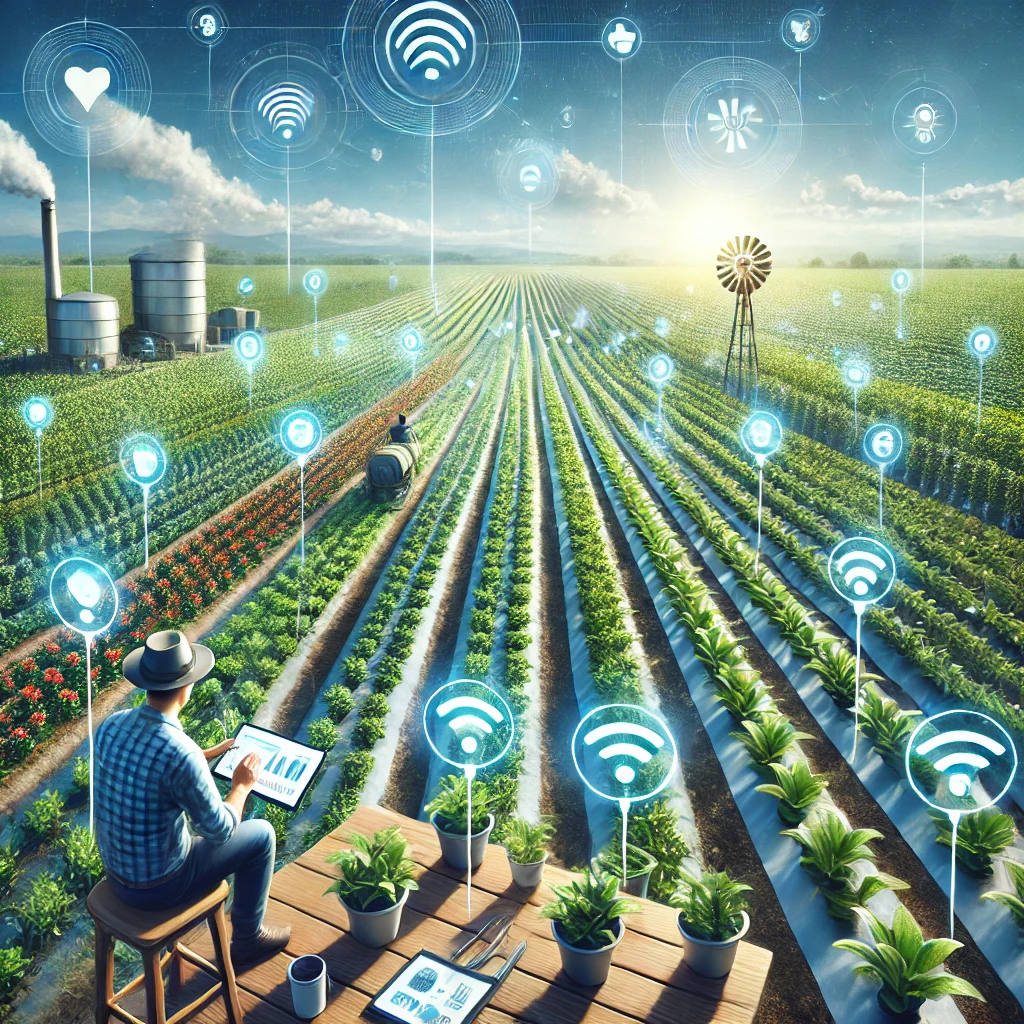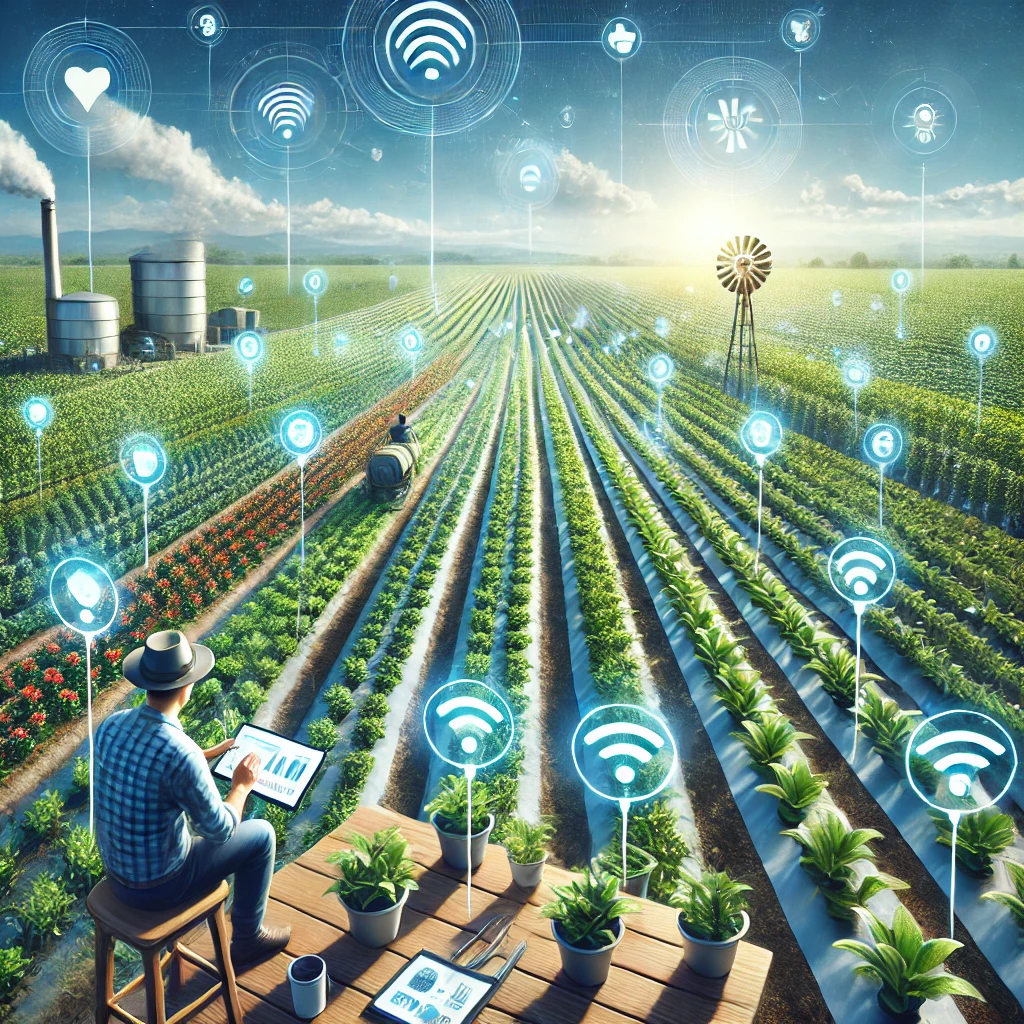
Introduction
The integration of Internet of Things (IoT) sensors into agriculture has revolutionized precision pest management. IoT technology provides real-time monitoring and data collection, allowing farmers to make informed decisions to control pests more effectively and sustainably. This approach enhances crop health, reduces pesticide use, and optimizes resources, promoting more efficient agricultural practices.
How IoT Sensors Work in Pest Management
IoT sensors are devices connected to the internet that collect and transmit data about environmental conditions and pest activity in real-time. In agriculture, these sensors can be deployed across fields to monitor factors such as temperature, humidity, soil moisture, and pest presence. The data collected is then analyzed using software platforms that can provide actionable insights, such as predicting pest outbreaks or recommending targeted interventions.
Benefits of Using IoT Sensors for Precision Pest Management
- Real-Time Monitoring and Early Detection: IoT sensors enable continuous monitoring of environmental conditions and pest populations, allowing for early detection of pest infestations. Early detection helps prevent widespread crop damage by enabling timely interventions, reducing the need for broad-spectrum pesticide applications.
- Data-Driven Decision Making: The data collected by IoT sensors provide farmers with valuable insights into pest behavior and environmental conditions. This data-driven approach allows for precise application of pesticides, targeting only affected areas and minimizing unnecessary treatments. As a result, farmers can reduce costs, decrease environmental impact, and enhance crop yields.
- Resource Optimization: IoT technology helps optimize the use of resources, such as water, fertilizers, and pesticides, by providing accurate information on field conditions. For example, sensors can detect soil moisture levels and recommend irrigation only when necessary, conserving water and reducing the risk of creating favorable conditions for pests.
- Sustainability and Environmental Protection: By minimizing pesticide use and optimizing resource management, IoT-enabled precision pest management supports sustainable agricultural practices.
Key IoT Technologies for Pest Management
- Environmental Sensors: These sensors monitor conditions like temperature, humidity, and soil moisture, which are critical for predicting pest activity. Changes in these parameters can trigger alerts for potential pest outbreaks, allowing farmers to take preventive measures.
- Pest Detection Sensors: Specialized sensors, such as pheromone traps equipped with cameras or infrared sensors, detect and monitor pest populations in the field. These sensors can identify specific pests and their life stages, providing detailed information for targeted pest control.
- Drones and Aerial Imaging: Drones equipped with IoT sensors and cameras can survey large areas of farmland, capturing high-resolution images and data. This technology helps identify pest hotspots, assess crop health, and monitor the effectiveness of pest control measures from above.
- Smart Traps: IoT-enabled smart traps automatically capture pests and send real-time data on pest counts and species to a central platform. These traps reduce manual labor and provide continuous monitoring, allowing for more accurate pest management strategies.
Challenges and Considerations
While IoT sensors offer numerous benefits, several challenges must be addressed to maximize their potential in pest management:
- Data Management and Analysis: The vast amount of data generated by IoT sensors requires robust data management and analysis tools. Farmers need user-friendly platforms that can interpret data and provide actionable insights without overwhelming them with information.
- Connectivity Issues: Reliable internet connectivity is crucial for IoT sensors to function effectively. In remote or rural areas, poor connectivity can limit the real-time capabilities of these devices, affecting the timeliness of pest management decisions.
- Cost and Accessibility: The initial cost of setting up an IoT-based pest management system can be high, potentially limiting access for small-scale farmers. Efforts are needed to develop affordable solutions and provide training to ensure all farmers can benefit from these technologies.
Future Directions in IoT-Enabled Pest Management
The future of IoT in pest management will likely involve further integration with artificial intelligence (AI) and machine learning (ML) to enhance predictive capabilities and automate decision-making processes. Innovations in sensor technology, such as more energy-efficient devices and advanced data analytics platforms, will improve the precision and effectiveness of pest management strategies.
Conclusion
The integration of IoT sensors in agriculture is transforming precision pest management by enabling real-time monitoring, data-driven decision-making, and resource optimization. While challenges exist, the benefits of IoT technology in enhancing sustainability and efficiency in pest control are significant. As technology continues to advance, IoT will play an increasingly vital role in modern agriculture, supporting farmers in achieving healthier crops and more sustainable farming practices.

